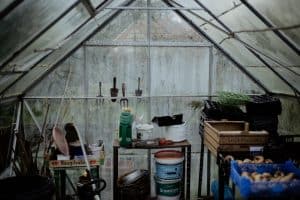While it sounds and looks slightly like science fiction, vertical gardening in greenhouses is actually quite straight-forward—or, should we say, straight up.
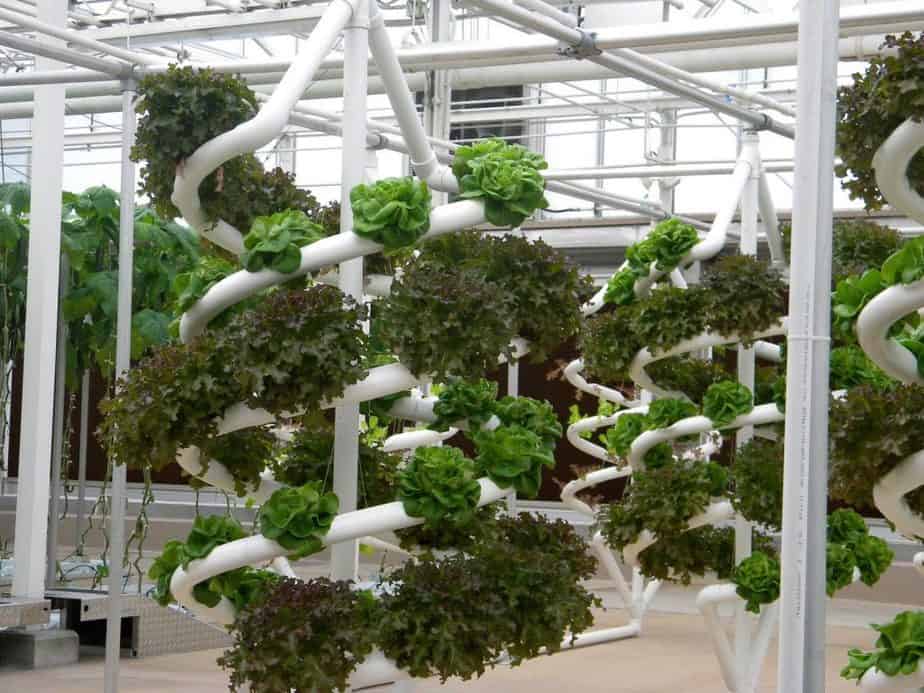
This great space-saving alternative works wonders in cramped situations and is actually ideal for greenhouses.
Keep reading to find out both why and how you can do it yourself!
Vertical Gardening in Greenhouses: It’s Ideal!
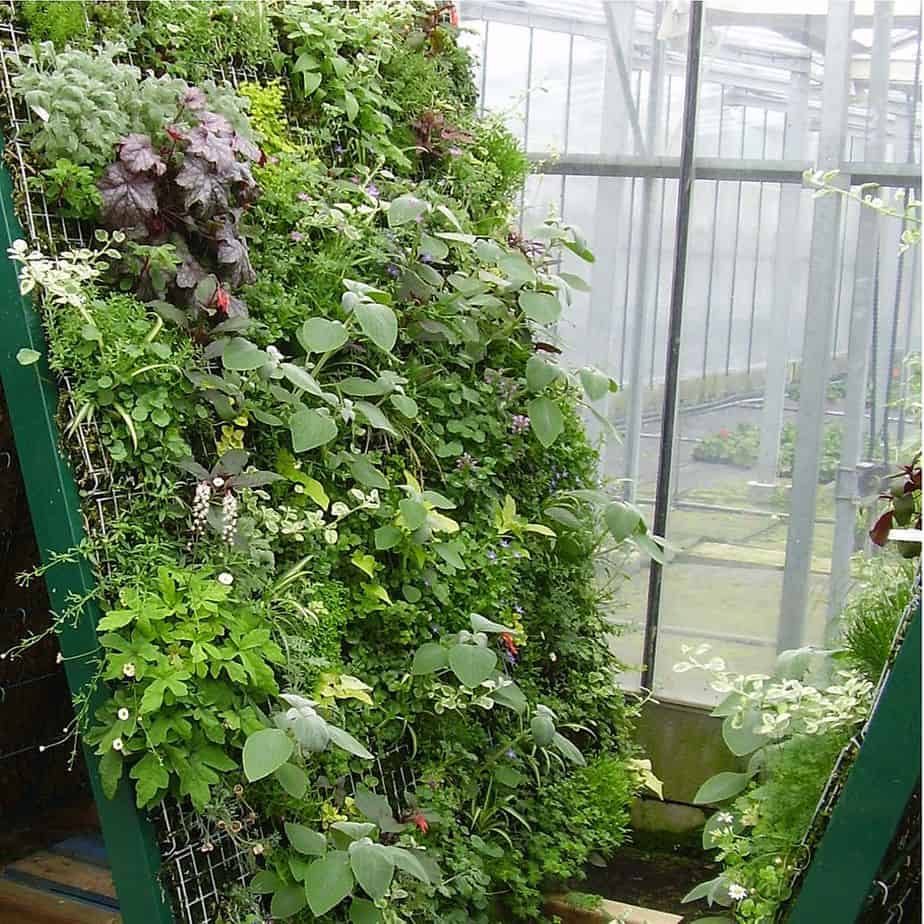
Just like it sounds, vertical gardening means cultivating plants in vertical rows instead of horizontally. Plants are stacked one on top of another, whether through shelving, vertical planters, vertical hydroponic systems, or vertical aeroponic systems.
Especially for growing food, vertical farming is becoming a more popular and influential method to increase production. People are even beginning to design skyscraper-farms! Or at least dreaming about it. Vertical gardening isn’t just a fun way to experiment with creative arrangements, but an important way of maximizing garden floor space with less waste. With better space utilization, more plants can be grown, which is good news for both your table and the planet.
Vertical farming is often used indoors because it’s important to be able to employ controlled environmental agriculture techniques when growing vertical—meaning it’s possible to control all the factors that affect plants, like light, fertilizers, soil amendments, irrigation system, and temperature.
Why Choose a Vertical Garden in Your Greenhouse?

First: it maximizes the space. Vertical gardening makes it possible to fill your entire greenhouse top-to-bottom with plants, not just the eye-level spaces. The more of your own food you can grow, the less money you’ll need to spend at the grocery store or farmers’ market.
But on a larger scale, vertical farming may be an essential innovation to feed our planet’s ever-growing population. As our population skyrockets, we need more food to keep the world thriving. Vertical farming may be one way to do that.
And as climate change dramatically shifts our planet’s landscape, less land is viable for food production and weather patterns are less friendly to traditional outdoor farming. Vertical greenhouses can help increase food security and land conservation.
Vertical greenhouse growing can also use advanced agricultural techniques that improve food production and quality. The ability to closely control plant nutrition means that closed-system farms can produce food with higher nutritional value and be assuredly free of pesticides and other harmful substances. This is particularly true with hydroponic and aeroponic systems.
Methods of Vertical Gardening In Greenhouses
First thing’s first: you’re going to want to get a step stool or a ladder or both.
Seriously, how else are you expecting to get to the vertical parts of your vertical greenhouse?
Method of Vertical Gardening #1 – Greenhouse Shelving

The most straightforward way to stack your greenhouse plants seems obvious: shelving! There are a few different ways to set up shelving in a greenhouse, but it’s best if your shelves are tiered, like bleachers in a baseball stadium. This way, the plants on the highest shelves won’t shade the lower shelves.
Set up your shelves with the highest tier on the wall opposite the side of the greenhouse that receives the most light to prevent shading even as the sun moves across the sky.
Method of Vertical Gardening #2 – Vertical Planters
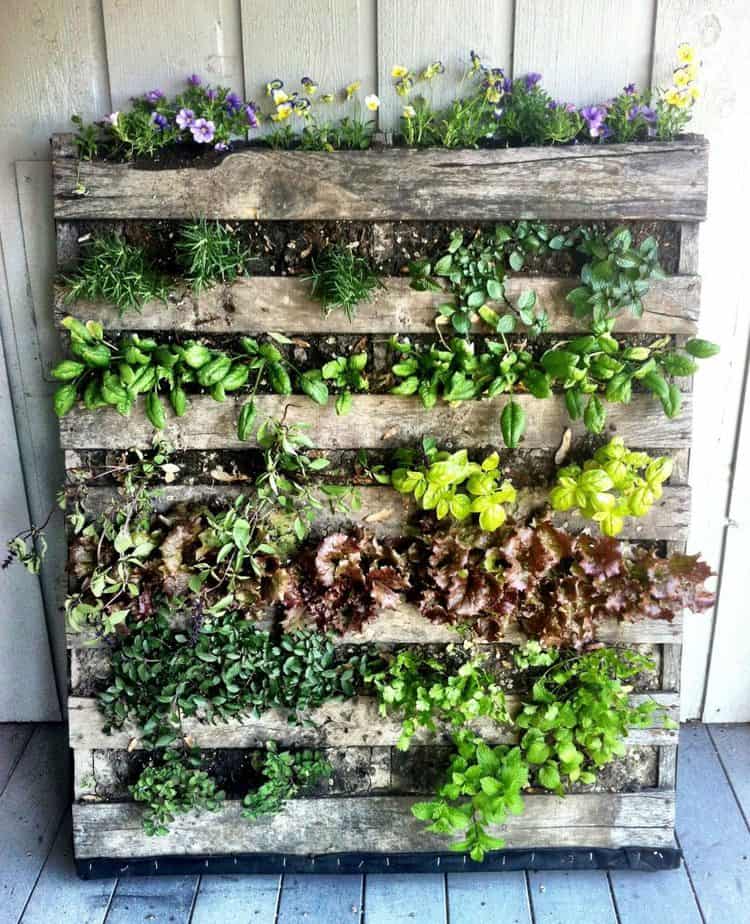
You’ve probably seen ads for strawberries and lettuce grown in simple vertical planters, some even table-top size. Vertical planters are centralized planting structures that utilize soil on the inside, with plants sticking out. Vertical planters are all over the market, from cute wheel o’ veggies designs to bigger potted vertical planter options and simple tower designs.
Besides shelving, vertical planters are the most straight-forward way to start growing plants up-and-down, so they’re very popular. Many people opt for store-bought planting structures, but you can certainly build your own—some people simply cut some holes in a wide PVC pipe and fill it with soil!
You’ll fill your planter with regular potting soil. Typically, these planters are watered from the top, allowing gravity to water the plants in the container, making maintenance incredibly easy. Keep in mind that when your planter is full of soil and leafy friends, it gets very top-heavy and may need safety supports to secure it from falling.
Some vertical planters look similar to hydroponic structures, so just be sure to do your research before you buy.
Method of Vertical Gardening #3 – Vertical Hydroponics
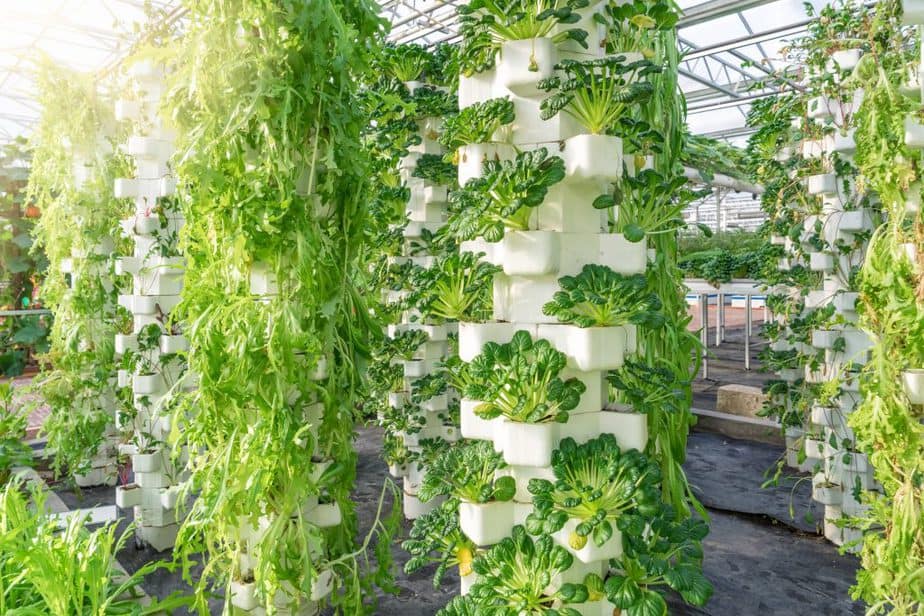
This is where things start to get a bit more sci-fi. Known for speedy and super-controlled growing, hydroponics is a system of growing plants soil-free.
Just like “regular” hydroponics, vertical hydroponics places a plant-housing no-soil structure in a vertical orientation. Plants’ roots are submerged in a water-based solution of nutrients that circulates to provide a healthy chemical composition. All of this means that careful monitoring of nutrient and pH levels in a hydroponic system is essential.
And that all makes it good from growing certain specialty crops…
Typically, the plants are held in place by a basket or other open cup-like container. Hydroponic styles are very popular for vertical growing because they don’t require you to scoop and maintain soil in columns high above your head.
Most hydroponic set-ups are recirculating, meaning the nutrient solution is collected and reused, so water is conserved. Just like watering in a vertical planter with soil, most hydroponics spread the nutrient solution from top-to-bottom—going into the uppermost module and allowing gravity to bring it to the plants beneath.
Hydroponic systems begin to get a bit more expensive and fancy—and cool. Some hydroponic systems incorporate both horizontal and vertical designs, even pyramids. Talk about innovation! Some have a timed watering cycle to save you the worry.
Vertical Aeroponics
Method of Vertical Gardening #4 – Aeroponics: the really far-out option
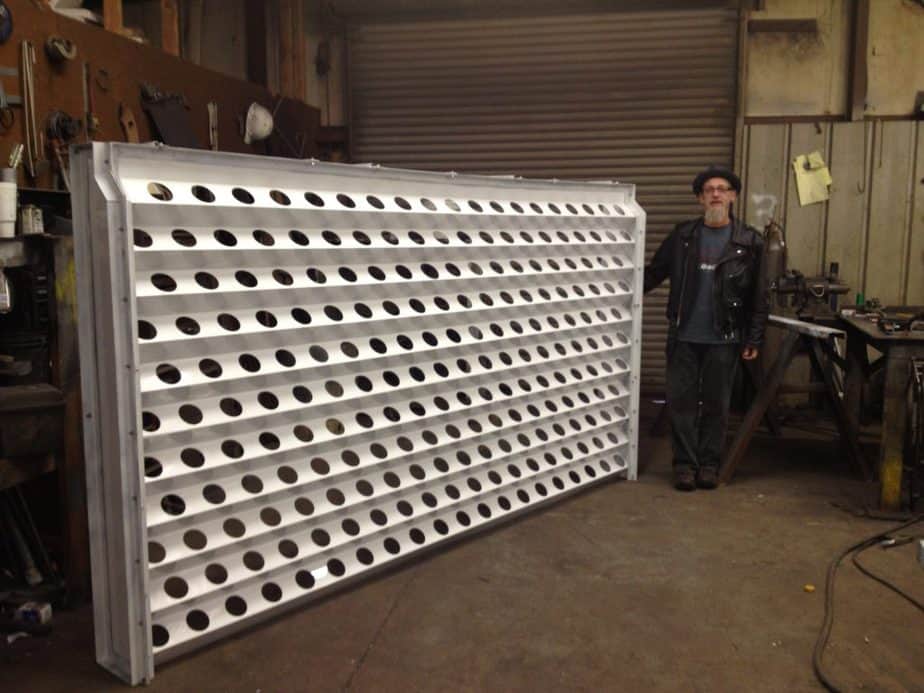
If you’re a budding engineer and want to take it a step even further, how about a growing technique invented by NASA? The innovation of Aeroponics in the field of vertical farming was made by NASA in the 1990s as an efficient technique for growing plants in space.
Aeroponics takes hydroponics into space-friendly farming, suspending plants’ roots in air and minimizing the amount of water used. Roots are misted with nutrient-rich water solution instead of submerged in it, require up to 95 perfect less water than soil-based methods.
Obviously this method is for the advanced gardener only—and the gardener with a lot of patience for experimentation.
Lighting Vertical Greenhouses
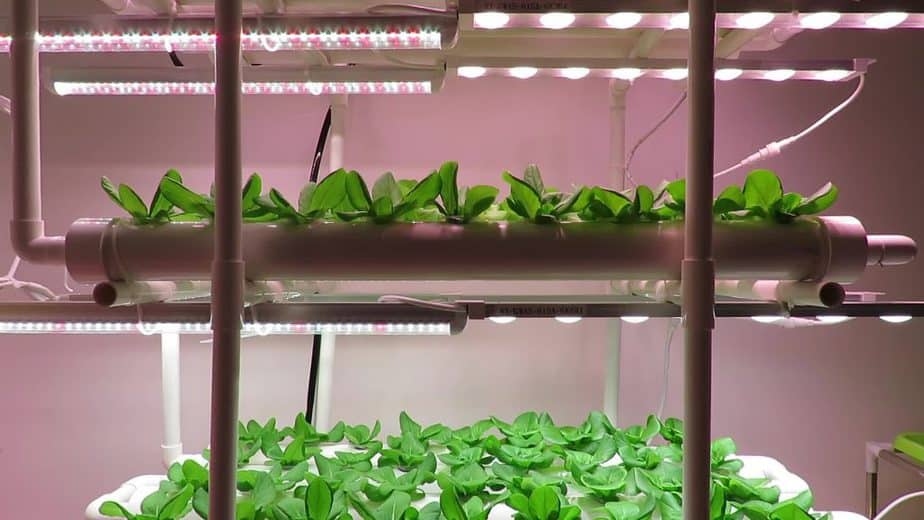
It takes some visualizing and planning to design the right vertical garden set-up in a greenhouse, especially considering lighting. How big will your plants grow? Will they block out light from above? How far apart will your shelves or towers be? If you have round towers, how will the plants on all sides get light?
Unlike having just one “layer” of plants in your greenhouse, plants are stacked atop one another, and often facing all directions, so vertical set-ups usually need to use more than just sunlight to give plants the light they want. Just like in “horizontal” greenhouses, many vertical greenhouses amplify sunlight by using metal reflectors or just white paint on floors and tables.
Be sure to set the tallest vertical system should be placed on the opposite side of the dominant light source. Plant larger crops at the bottom of the system. Newer vertical greenhouses and other, large-scale indoor facilities use solely artificial light. You might consider a mix of both for your backyard greenhouse.
The most popular kind of “grow” light is an LED because they’re extremely energy efficient and have become the most affordable kind of indoor gardening light. Because of a certain “highly” celebrated crop that’s popular to grow indoors, LED greenhouse lights are easy to find for purchase.
If you want to go all-out, some shelving units even come with built-in LED lights to keep shelved plants lit and happy.
Best Plants for Vertical Growing
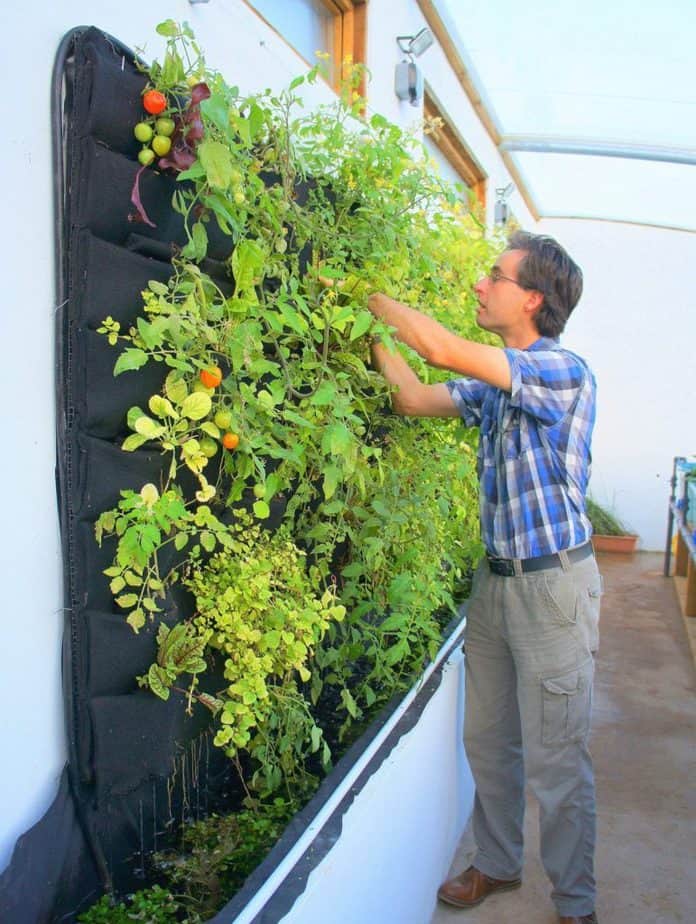
Since vertical gardening can’t usually accommodate very deep root systems or rigid stalks, and plants will need to happily grow sideways (unless you use simple shelving), you can imagine what kinds of plants may not work for this endeavor. You’re not going to grow sunflowers sticking out the side of your vertical planter.
For these reasons, “flexible,” light plants are preferred. Beans, tomatoes, berries, and leafy vegetables (that aren’t super stalky) are all perfect for vertical greenhouses.
Even viney plants like squash and melons can be grown vertically, with enough space. And you’ll want to consider where those heavy fruits will be hanging as they start to grow—you don’t want them tugging their roots out of the system. If you’re growing bigger produce, you can secure the fruit in as it starts to grow by tying it to the vertical system, or even creating a little hammock for it.


